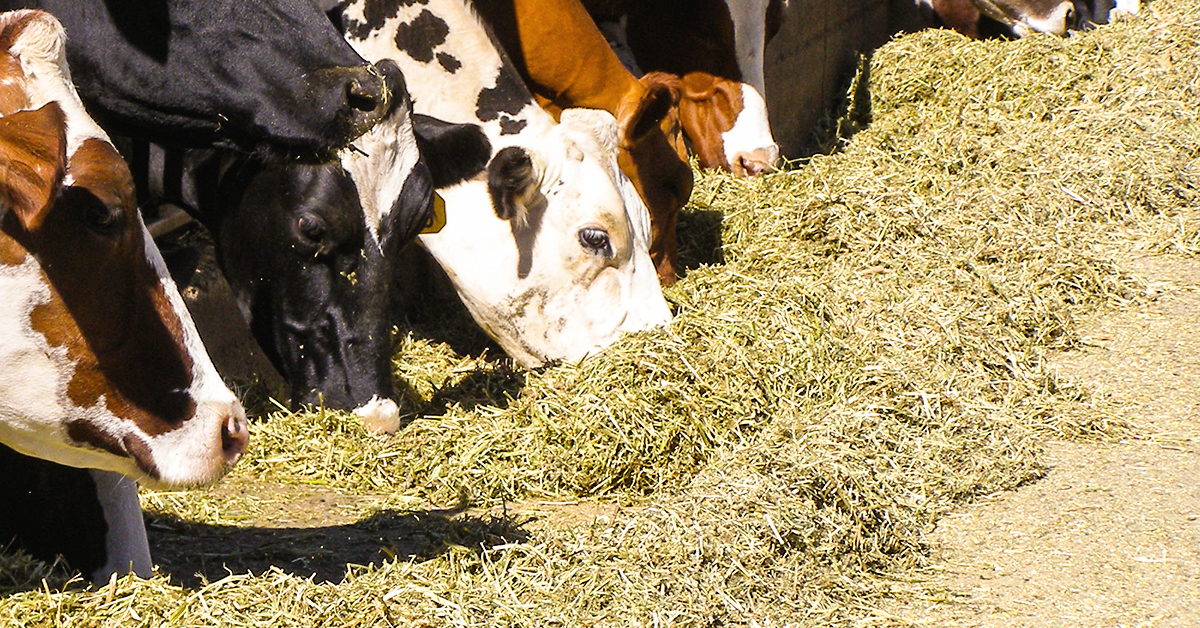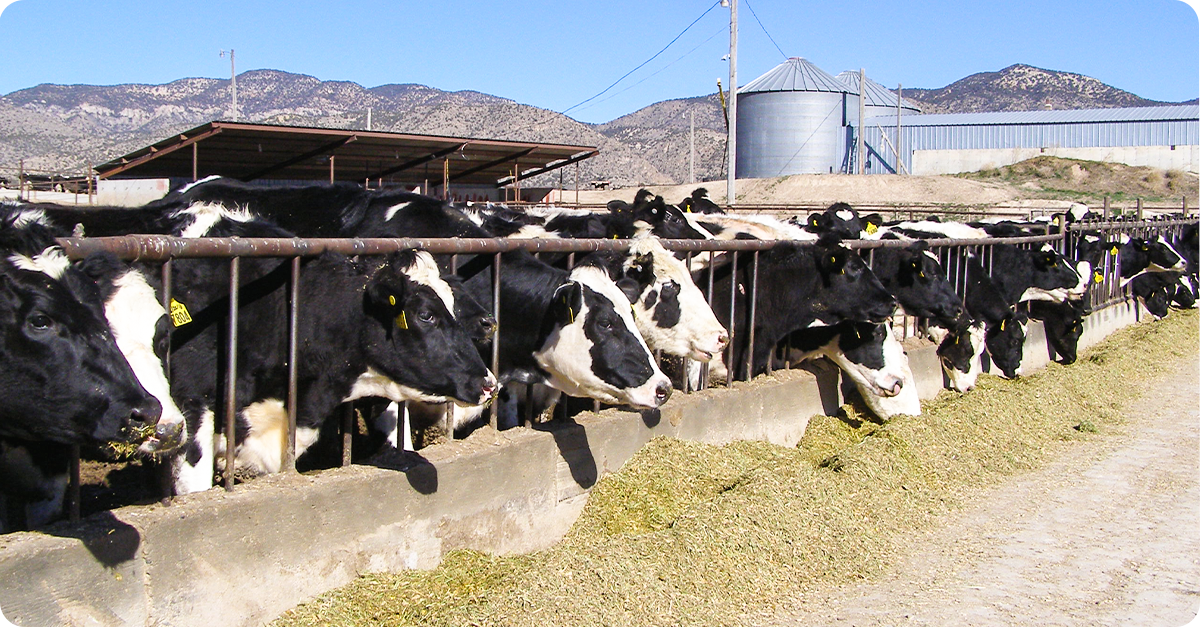
QWERTY, asdfjkl; aNDFom – do any of these sequences mean anything to you?
The first time I heard about the history of the keyboard and the QWERTY keyboard development, I couldn’t make heads or tails of it. QWERTY is the order of the first six letters in the top left of our current conventional keyboard. Due to the nature of the QWERTY keyboard and my typing classes in junior high, whenever I get a frustrating case of writer’s block I often pound out ASDFJKL; multiple times. The keys ASDF and JKL; are the home position keys on a keyboard so you can pound them without changing positions. Without reference, QWERTY and ASDFJKL; mean absolutely nothing.

This brings me to what may seem like another meaningless sequence of letters: aNDFom. I recently tried to explain these initials to a customer and realized that feed-related abbreviations are getting complicated…
What's on Your Feed Analysis?
On a typical feed analysis, you will see ADF, aNDFom, uNDFom 30hr, NDFDom 30hr. All of these letters have meaning, but deciphering them can be difficult. Sometimes I find myself simply talking about RFV, because that is a number that people understand, price off of, and is widely (though not deeply) understood and accepted.
As technology in labs has advanced and we have been able to further understand the components of feeds, we have come up with more acronyms to describe them.
In the beginning, there was Crude Fiber. This was simply what was left after an acid and a base had “digested” what they could. Over time, it was evident that not all fiber was created equal. Peter Van Soest created a method and NDF and ADF were born.
NDF and ADF
NDF refers to fiber residue that is present after extraction in a Detergent with a Neutral pH.
ADF is performed after NDF and is the remaining fiber residue after solution in an Acidic Detergent. Further, it was discovered that high starch feeds, like corn silage, created a gel in the Neutral Detergent and artificially inflated the NDF number, so, amylase was added to the process to remove the starch. NDF then became aNDF.
Recently the –om was added to the end of the aNDF, meaning organic matter. In high ash feeds, especially those that may have significant dirt, like haylage, the high ash content can overwhelm the NDF solution and reduce effectiveness and erroneously over report the fiber fraction of a feed. These advances have more truly reported the fiber fraction of feedstuffs.
aNDFom, uNDF, dNDF, NDFD
aNDFom stands for amylase Neutral Detergent Fiber organic matter, it is a bit of a mouthful, but it is more representative of the mouthful we want to feed our cows.
Typically, further down your forage report, you will find uNDF, dNDF, NDFD, or some combination of the three. uNDF is the undigestible NDF and is associated with a time point.
dNDF (or NDFD) is the digestible NDF (NDF Digestibility) and is also tied to a time point. These numbers are basically inverse of each other. Either the NDF is digestible within a time period or it is not. The typical time periods used are 30 hours, 120 hours, and 240 hours. A high-producing dairy cow needs fiber, but needs it to move through her rumen quickly so that she can then eat more. The 30-hour time point gives a sense for the rapidly usable fiber which will vacate her rumen within 30 hours and allow her to keep eating. Both of the other common time points (120 and 240 hours) provide values that help calculate the rate of digestion and after 240 hours (10 days) it is safe to assume that what is left probably won’t be digested.
uNDF contributes to the fiber mat in the rumen that is essential for healthy rumen function and is the biome and food source for the microorganisms that reside in the rumen. But even with all of these analysis advances we often still market forages based upon the Van Soest method of ADF and NDF, dating back to the 1960s.

Understanding TDN in Livestock Nutrition
Total Digestible Nutrients or TDN is a rating system created to assign value to a forage. TDN is often estimated with an equation that only uses ADF from analysis. The actual equation, though, includes Carbohydrates, Fat, NDF, and Crude Protein.
Relative Forage Value (RFV)
Relative Forage Value or RFV is a pricing index that is calculated as ADF:NDF ratio with some constants to create the numbers we are used to seeing. This is a widely used pricing index but lacks information concerning how the feed will perform in cattle.
Relative Forage Quality (RFQ)
Relative Forage Quality or RFQ is an adapted pricing index that was created in an attempt to displace RFV and provide slightly more information on cattle performance. It takes NDFD 48-hour information into account as well as TDN. This index has not gained the traction hoped for, and now most analyses do not provide a 48-hour NDFD time point, making RFQ incalculable.
Using Analysis in your Feeding Program
Cattle need fiber. High RFV test alfalfa has very little fiber and can reduce butterfat, make cows loose, and even lower milk production if the rumen environment is disrupted excessively. Small grain silage can often have an RFV that seems depressingly low, but with NDFD numbers, we have a better way to evaluate our feedstuffs.
I consistently recommend that each forage be evaluated on its fiber quality first and foremost. Each forage variety will have different benchmarks, but most forage is fed for the fiber. A high-producing dairy cow needs more than one-quarter of her ration to be aNDFom, and the more digestible that fraction is the more energy she can derive from it. This approach makes higher fiber alfalfa more valuable if it is highly digestible.
Higher fiber alfalfa has a lower RFV. This reflects what some long-time farmers often say, “Sometimes my lower test hay feeds better than a higher test.” The cows know and their performance will tell you, and with the advances in the lab, we are getting more accurate predictions of forage quality before we feed it to the cows.
Feeding What Your Cows Need
So, as you evaluate the forages you are going to buy and feed to your cattle, spend a couple of extra dollars on an analysis that will provide NDFD numbers. Then compare the aNDFom numbers and the NDFD 30-hour numbers to other feed options. You might be surprised at which RFV you end up choosing. If you choose a lower RFV, you will probably save more than you spent on the test.
As always, if you have questions and want help with the interpretation of your analyses, contact an IFA feed & nutrition advisor.
Discover IFA Feed& Nutrition Services
Written by Robert Bowles, M.S., P.A.S., and originally published in the IFA Cooperator magazine (vol. 83, no. 3) Fall 2017. Robert is a Nutritionist at IFA North Region Feed.

